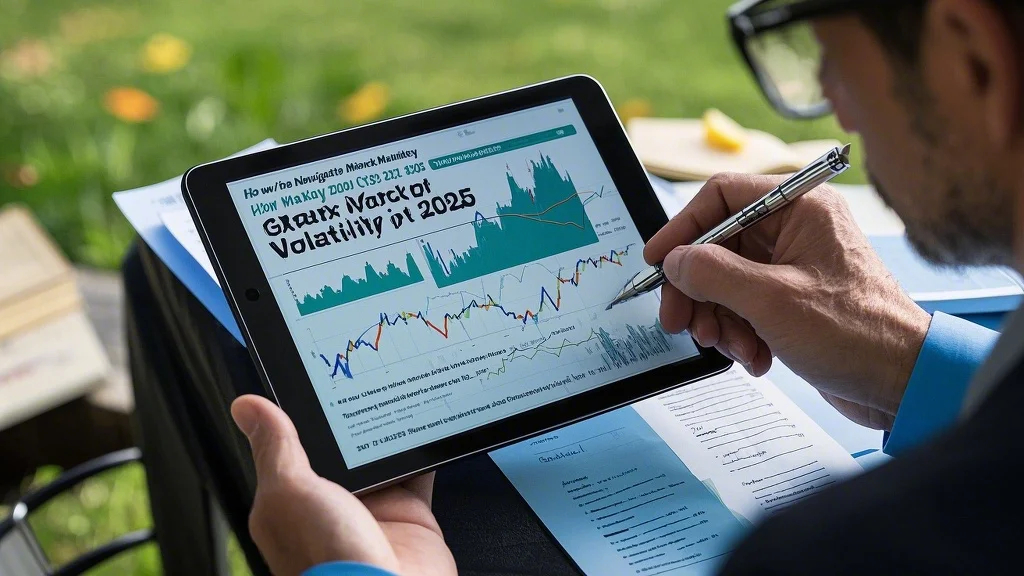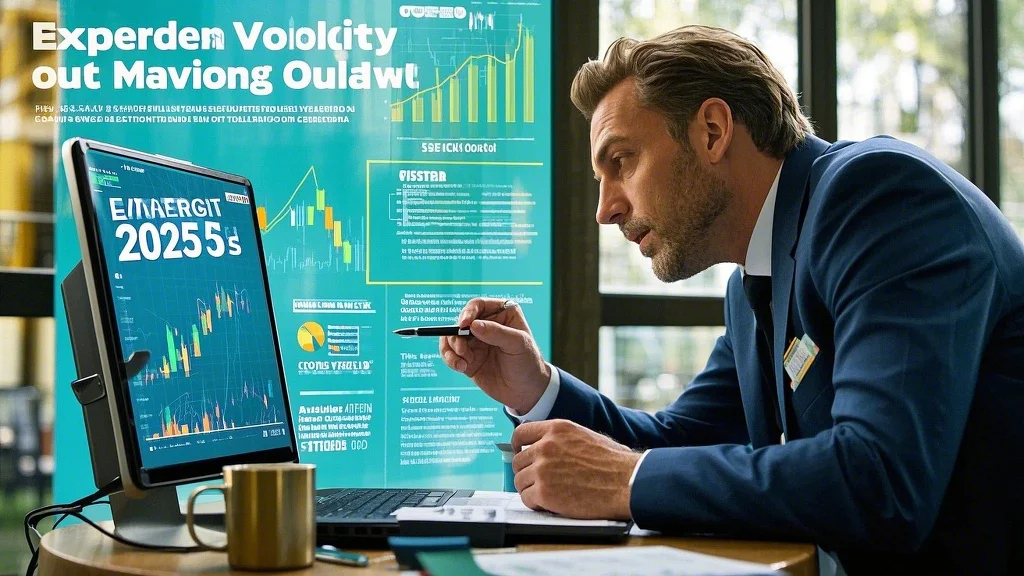Understanding the New Era of Stock Volatility
The financial landscape of 2025 has introduced unprecedented levels of stock volatility that demand a fundamental shift in investor mindset. Unlike the relatively stable markets of the early 2020s, today’s trading environment resembles a high-stakes chess game where geopolitical tensions, technological disruptions, and monetary policy shifts create daily price swings that would have been considered extreme just a few years ago. This new reality requires investors to develop what market veterans call “volatility tolerance” – the ability to maintain strategic positions despite short-term turbulence. The key lies in distinguishing between noise and meaningful market movements, a skill that separates successful investors from those who panic-sell during temporary dips. What makes current stock volatility particularly challenging is its global nature, where events in one region can trigger chain reactions across the global financial market within minutes, thanks to interconnected electronic trading systems that never sleep.
Seasoned portfolio managers are adapting to this environment by employing sophisticated hedging strategies that were previously the domain of institutional investors. Retail traders now have access to tools like volatility index (VIX) options and inverse ETFs that can help mitigate risk during turbulent periods. However, these instruments require careful handling – they’re the financial equivalent of power tools that can build wealth just as easily as they can cause significant damage if misused. The current market outlook 2025 suggests this volatility isn’t going away anytime soon, making it crucial for investors to develop a personalized risk management framework. This might involve setting stricter stop-loss orders, reducing position sizes, or allocating a portion of one’s portfolio to non-correlated assets that can serve as stabilizers when equity markets turn stormy.
Decoding the Global Financial Market Interconnections
The global financial market has become a complex web of interdependencies where developments in Asian bond markets can affect European tech stocks, and Latin American currency fluctuations might impact North American retail sectors. This interconnectedness has amplified both opportunities and risks for investors trying to navigate the stock trading trends of 2025. One particularly striking development has been the emergence of “financial domino effects” where trouble in one sector or region can trigger unexpected consequences elsewhere. For instance, the renewable energy boom has created surprising linkages between semiconductor manufacturers, mining companies, and utility providers across continents. Savvy investors are now mapping these connections to anticipate second and third-order effects that might impact their portfolios.
Currency markets have become an especially critical component of the global financial market puzzle this year. The traditional safe-haven status of the U.S. dollar is being tested as multiple central banks experiment with digital currencies and alternative payment systems. This shift has introduced new variables into the market sentiment analysis equation, requiring investors to monitor foreign exchange movements with the same intensity they previously reserved for equity markets. The rise of blockchain-based settlement systems and tokenized assets has further complicated the picture, creating parallel financial ecosystems that sometimes move in sync with traditional markets and sometimes diverge dramatically. Understanding these dynamics has become essential for anyone attempting to construct a resilient international portfolio in today’s environment.

Interpreting the Market Outlook 2025 Through Multiple Lenses
The market outlook 2025 presents a mosaic of conflicting signals that demand nuanced interpretation. On one hand, technological innovation continues to create extraordinary growth opportunities in sectors like artificial intelligence, quantum computing, and biotechnology. On the other hand, demographic shifts, climate change pressures, and geopolitical realignments are introducing structural challenges that no investor can afford to ignore. What makes current forecasts particularly tricky is the disappearance of traditional economic indicators’ predictive power – metrics that reliably signaled turning points in previous decades now often provide false signals or contradictory messages. This environment favors investors who can synthesize information from diverse sources rather than relying on any single analytical framework.
One consistent theme emerging from the market outlook 2025 is the growing importance of scenario planning. Instead of making binary bullish or bearish predictions, successful analysts are developing multiple probability-weighted scenarios that account for various geopolitical, technological, and economic pathways. This approach acknowledges the inherent uncertainty in today’s markets while still providing actionable insights. For example, rather than simply predicting whether interest rates will rise or fall, sophisticated investors are constructing portfolios that can perform reasonably well across a range of possible rate environments. This mental shift from prediction to preparation represents one of the most significant evolutions in investment thinking as we navigate the complex stock trading trends of mid-decade.
Capitalizing on Emerging Stock Trading Trends
The stock trading trends of 2025 reflect both technological innovation and changing investor psychology. Algorithmic trading has reached new levels of sophistication, with machine learning models now capable of parsing earnings call transcripts, satellite images of retail parking lots, and even social media sentiment to inform trading decisions. While this has increased market efficiency in some ways, it’s also created new forms of volatility as competing algorithms sometimes amplify price movements. Retail investors have responded by forming online communities that can collectively move markets, particularly in small-cap and meme stocks where liquidity is thinner. This democratization of market influence has added another layer of complexity to market sentiment analysis, requiring professionals to monitor grassroots investor forums with the same diligence they apply to traditional financial news sources.
Options trading has become another defining feature of current stock trading trends, with volume regularly surpassing that of underlying stock trading in many names. This options activity isn’t limited to sophisticated traders – retail investors have embraced options as a way to amplify returns in a low-yield environment. However, this trend has created feedback loops where heavy options volume can influence the price of the underlying stocks, particularly around monthly expiration dates. Understanding these mechanics has become essential for navigating today’s markets, as has recognizing how the growing popularity of zero-days-to-expiration (0DTE) options can create sudden, sharp movements that ripple across related securities and sectors.
Mastering Market Sentiment Analysis in the Digital Age
Market sentiment analysis has evolved far beyond traditional surveys and put-call ratios in 2025. The proliferation of alternative data sources – from credit card transaction patterns to geolocation data – has created both opportunities and challenges for investors trying to gauge the market’s emotional temperature. One particularly interesting development has been the rise of “sentiment arbitrage,” where traders identify discrepancies between traditional fundamental analysis and crowd-sourced sentiment indicators. These discrepancies often signal turning points before they’re apparent in price action or conventional metrics. However, the sheer volume of available sentiment data requires sophisticated filtering to separate meaningful signals from noise, leading many firms to develop proprietary sentiment-scoring algorithms.
The psychological aspect of market sentiment analysis has become particularly crucial during periods of extreme stock volatility. Market veterans note that sentiment indicators often provide better timing signals than valuation metrics during turbulent periods, as investor psychology can drive prices far beyond what fundamentals would suggest in both directions. The most successful traders of 2025 have developed what might be called “sentiment resilience” – the ability to maintain objectivity when crowd psychology reaches extremes. This involves recognizing characteristic patterns in sentiment indicators that historically preceded market turns, such as the “capitulation phase” where even long-term holders begin selling indiscriminately, often marking the final stage of a downturn before recovery begins.
Constructing a Portfolio for the Volatile Global Financial Market
Building a resilient portfolio in today’s global financial market requires equal parts discipline and flexibility. Traditional asset allocation models are being stress-tested by the unique conditions of 2025, prompting many investors to explore alternative approaches. One strategy gaining traction is “barbelling” – maintaining conservative, income-generating investments on one end of the portfolio while allocating a smaller portion to high-conviction growth opportunities on the other end. This approach acknowledges the reality that in an environment of elevated stock volatility, middle-of-the-road investments often get squeezed from both directions. The barbell strategy provides stability while still allowing participation in transformative growth stories that could define the market outlook 2025 and beyond.
Geographic diversification has taken on new dimensions in the current global financial market landscape. Rather than simply allocating by country or region, forward-thinking investors are constructing portfolios based on exposure to different monetary policy regimes, supply chain networks, and technological ecosystems. This more nuanced approach to geographic diversification recognizes that in our interconnected world, traditional country classifications often mask more important economic and financial distinctions. For instance, a company headquartered in one country might derive most of its revenue from another region, manufacture in a third location, and rely on intellectual property developed elsewhere. Understanding these complex global footprints has become essential for accurate market sentiment analysis and effective portfolio construction.
